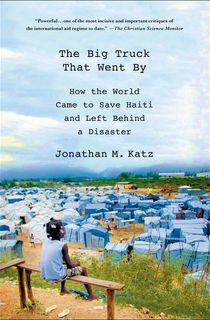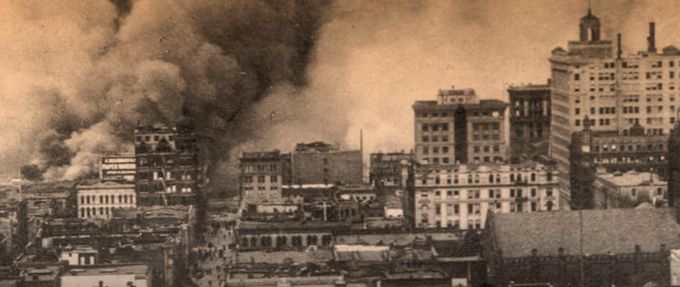On August 23rd, 2005, Hurricane Katrina formed out of a tropical depression over the Bahamas. Five days later, it had graduated to a deadly category 5 storm. The next day, on August 29th, the storm struck the Gulf Coast of the United States.
Upon landfall, the hurricane had shrunk back down to a category 3, but it carried with it sustained winds of 100-140 miles per hour, and had a diameter of roughly 400 miles. The storm caused unimaginable damage to Louisiana, Mississippi, and Alabama, but it was New Orleans that suffered the worst of it.
On average, New Orleans sits about six feet below sea level, and when Hurricane Katrina damaged the levees in the region, the flooding became catastrophic. The poor and vulnerable citizens of the city were left in a lurch, as government response was slow and inadequate.
Hurricane Katrina affected roughly 90,000 square miles of the United States, killing almost 2,000 people. The storm displaced 1 million people and caused over $100 billion in damage.
The devastation and ensuing failure to help those in need inspired Congress to make a series of reforms. Among them was a requirement that all levels of government train to execute coordinated disaster response plans. Over the next decade, FEMA shelled out billions in grants to build better preparedness.
On the 20th anniversary of Hurricane Katrina, we mourn the losses caused by natural forces and human error. Unfortunately, it is tragedy that prepares us for the challenges of the future.
After all, Hurricane Katrina is not the first natural disaster to change the way we do things—and it certainly won't be the last.
Here are six natural disasters that changed history.
The Eruption of Mount Vesuvius in 79 BCE
Mount Vesuvius had been dormant for centuries before it erupted on August 24th, 79 BCE. With its eruption, southern Italy was exposed to a 10-mile mushroom cloud of ash, and a 12-hour deluge of falling ash and pumice hail up to 3 inches in diameter.
The thriving Roman cities of Pompeii and Herculaneum were destroyed, killing thousands of unsuspecting people. As the cities disappeared under thick layers of mud and volcanic ash, they were all but forgotten for more than a millennia.
Pompeii and Herculaneum were rediscovered beneath the volcanic shell in the 18th century. Excavation of the site provided a remarkable snapshot of everyday life in Ancient Rome.
The tragic eruption in 79 BCE did not change how life moved forward, but rather changed how we as human beings looked backwards. With the excavation of Pompeii and Herculaneum, modern archaeology was born.
Beyond reviving classical aesthetics in art, architecture, and literature, the preserved artifacts of these cities offered insight into the ancient world's social and economic life.
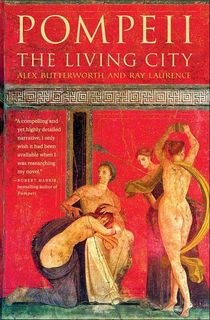
Pompeii
The Black Death in Europe from 1347 to 1353 CE
Epidemics may not be the first thing you think of when someone mentions “natural disasters,” but there's truly nothing more devastating than a sweeping illness—as we well know, in light of recent events.
The bubonic plague—also known as The Black Death—arrived in Europe in 1347. It was brought to the continent by 12 ships that crossed the Black Sea to dock at the Sicilian port of Messina.
Those gathered on the docks that day were horrified to find that most of the sailors aboard the ships were dead. Those that still lived were terribly ill, and covered in oozing boils.
The authorities immediately ordered the fleet of ships to leave the harbor, but the damage had already been done. Over the next few years, more than 20 million people in Europe would die from this epidemic, eliminating nearly one-third of the continent's population.
The Black Death influenced history in a number of ways, largely through the effects of the drastic decline in population. As so many people perished, there was a sudden labor shortage throughout Europe. As Europe struggled under this labor shortage, the peasants began to recognize their power and began to revolt against the feudal system, eventually toppling it.
The panic caused by the plague also had interesting influences on attitudes about religion. While many believed the Black Death was a punishment from God and rushed to pay penance and rededicate themselves to Christianity, others began to question why any higher power would bring about such suffering. These conversations led to the Renaissance and Reformation
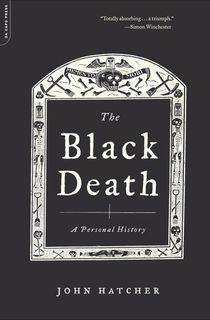
The Black Death

How the Black Death Gave Us the NHS
The Great Fire of London in 1666 CE
The Great Fire of London would have been bad enough on its own, but the travesty was made all the worse for the fact that it came on the heels of another disaster: 1665's Great Plague of London.
The Great Plague was the city's last a major outbreak of The Black Death. With this bacterial outbreak, roughly 15 to 20 percent of London's population perished.
The sickness peaked in September and began to taper out in winter of that year. In September of 1666, the outbreak had mostly ended.
Unfortunately, on September 2nd, 1666, a baker named Thomas Farriner accidentally cause even more tragedy for the city. Farriner's unattended oven spit sparks onto nearby materials, and though the flames began small, the close quarters of London and the highly flammable buildings meant that the blaze soon consumed more than 13,000 houses.
436 acres burned, decimating most of London's official city.
Rebuilding London was a massive task, but though many homes and lives were lost, the tragedy did bring about a new era of improvements. Urban planning was revolutionized, and new building and sanitation regulations ushered in a safer and more organized London.
New fire-fighting techniques were also implemented in the wake of this tragedy, as well as the creation of the first modern insurance companies.

1666
The San Francisco Earthquake in 1906 CE
At 5:13 in the morning on April 18th, 1906, an earthquake with an epicenter off the shore of San Francisco devastated the city. The quake ruptured the San Andreas Fault both to the north and the south of San Francisco, causing a 296-mile disturbance. The rumble could be felt from Los Angeles to southern Oregon, and as far inland as central Nevada.
In the wake of the earthquake, fires roared through the city. The tremors destroyed the water mains, which left firefighters with no way to contain the growing flames. As such, San Francisco burned for days.
At the time, the city housed a population of roughly 400,000 people. In the wake of the natural disaster, over 3,000 people died and more than 28,000 buildings were destroyed, leaving about 250,000 people homeless. The damages from the disaster were estimated to be around $500 million.
Though the city saw massive devastation, it bounced back fairly quickly. The razed city also provided a silver lining: a new and improved San Francisco. The original city had grown in a disorganized and haphazard manner with the population boom of the Gold Rush, but now planners were able to craft an elegant and logical layout.
With San Francisco's urban center destroyed, the growth of new towns around the bay was encouraged. Alongside these developments came a new population boom.
The 1906 earthquake also ushered in major advancements in seismology and disaster preparedness. New building codes were established, and scientists began to study the San Andreas Fault for a better understanding of it.
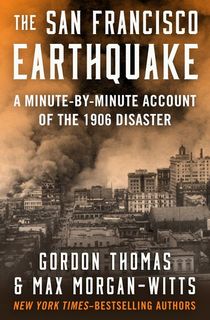
The San Francisco Earthquake
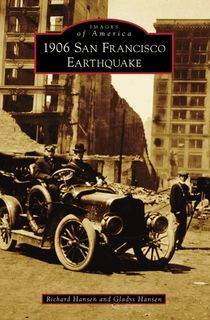
1906 San Francisco Earthquake
The Dust Bowl in the 1930s CE
In the 1930s, the southern plains region of the United States was struck by a severe drought that caused relentless dust storms. From Texas to Nebraska, high winds picked up suffocating dust and killed crops, livestock, and people across the region. This catastrophe was known as the Dust Bowl, and it exacerbated the already devastating effects of the Great Depression.
These intense dust storms were called “black blizzards,” and could carry the topsoil of Texas and Oklahoma as far as New York City. The billowing dust clouds could darken the sky for days at a time, and fell like a heavy snow that people had to shovel away. Even well-sealed homes saw dust sneak through the cracks, coating furniture, food, and people.
People of the plains developed “dust pneumonia,” which caused chest pain and difficulty breathing. Though there is no exact statistics on how many people perished from this condition, estimates rand from hundreds to thousands of people.
In response to the Dust Bowl, President Franklin D. Roosevelt added measures to his New Deal plan not only to help poor and displaced farmers, but to ensure poor farming and ecological practices never led to such a thing again. In 1935, Congress established the Soil Erosion Service and the Prairie States Forestry Project. The former created and pushed new farming techniques to fight against soil erosion, while the latter put local farmers to work planting trees to act as windbreaks across the Great Plains.
The Dust Bowl also caused a massive migration out of the plains states. In one of the largest migrations in American history, an estimated 2.5 million people left Texas, New Mexico, Colorado, Nebraska, Kansas, and Oklahoma. As these poverty-stricken individuals fled to California, they left a lasting mark on the state's politics and culture.
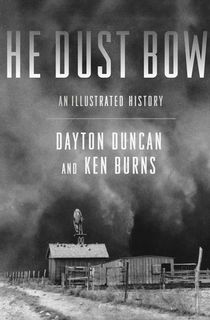
The Dust Bowl
The Haiti Earthquake in 2010 CE
As the island of Hispaniola sits between two large tectonic plates, Haiti is no stranger to earthquakes. Devastating seismic activity rocked the country in 1751, 1770, 1842, and 1946. However, on January 12th, 2010, Haiti experienced a 7.0 earthquake that was one of the deadliest in history.
The earthquake began that evening at 5pm, and with an epicenter 16 miles away from the capital of Port-au-Prince, the tremors could be felt as far away as Cuba and Venezuela. That same day, there were eight aftershocks, but over the next two weeks, no less than 52 aftershocks were recorded in total.
An earthquake of this magnitude is difficult for any region, but for a poverty-stricken country with poor infrastructure and underdeveloped emergency services, it was an utter catastrophe. Every single hospital—along with three Doctors Without Borders facilities—in Port-au-Prince was seriously damaged. The airport and seaport of the capital were rendered inoperable, major roads were impassible, and the telecoms services were down. Nearly 300,000 buildings, primarily homes, were decimated.
The amount of human life lost is incalculable even to this day. While some estimates are extremely conservative putting death tolls at around 50,000, the Haitian government estimates more than 316,000 dead. Nearly one million people were displaced.
An historic humanitarian response was immediately launched as news and images of Haiti's devastation broke. However, the aid was difficult to deliver to the people of Haiti, as the infrastructure of the country was so crippled.
2010 is still relatively recent history, so all of the lasting impacts this tragedy has are perhaps yet to be seen. But it did highlight some extreme vulnerabilities, on both a local and global scale.
First things first, the massive damages caused an even greater strain on Haiti's debt, having ripple effects through the global economy. However, the publicity on the plight of increased suffering in poverty-stricken regions increased awareness of the strain on healthcare systems, as well as the dangers of political instability and corruption.
The heartening efforts from people around the globe was incredible, but the aid coordination was poorly organized and ultimately inadequate. This too shone a light on performative efforts over quality care, leading to, at least in America, a more shrewd examination of how to help those affected by crises.
The earthquake provided some vital geological insights. Studying this disaster showed how topography can amplify ground motion. Furthermore, it spurred the development of microzonation maps to better prepare for disaster.
